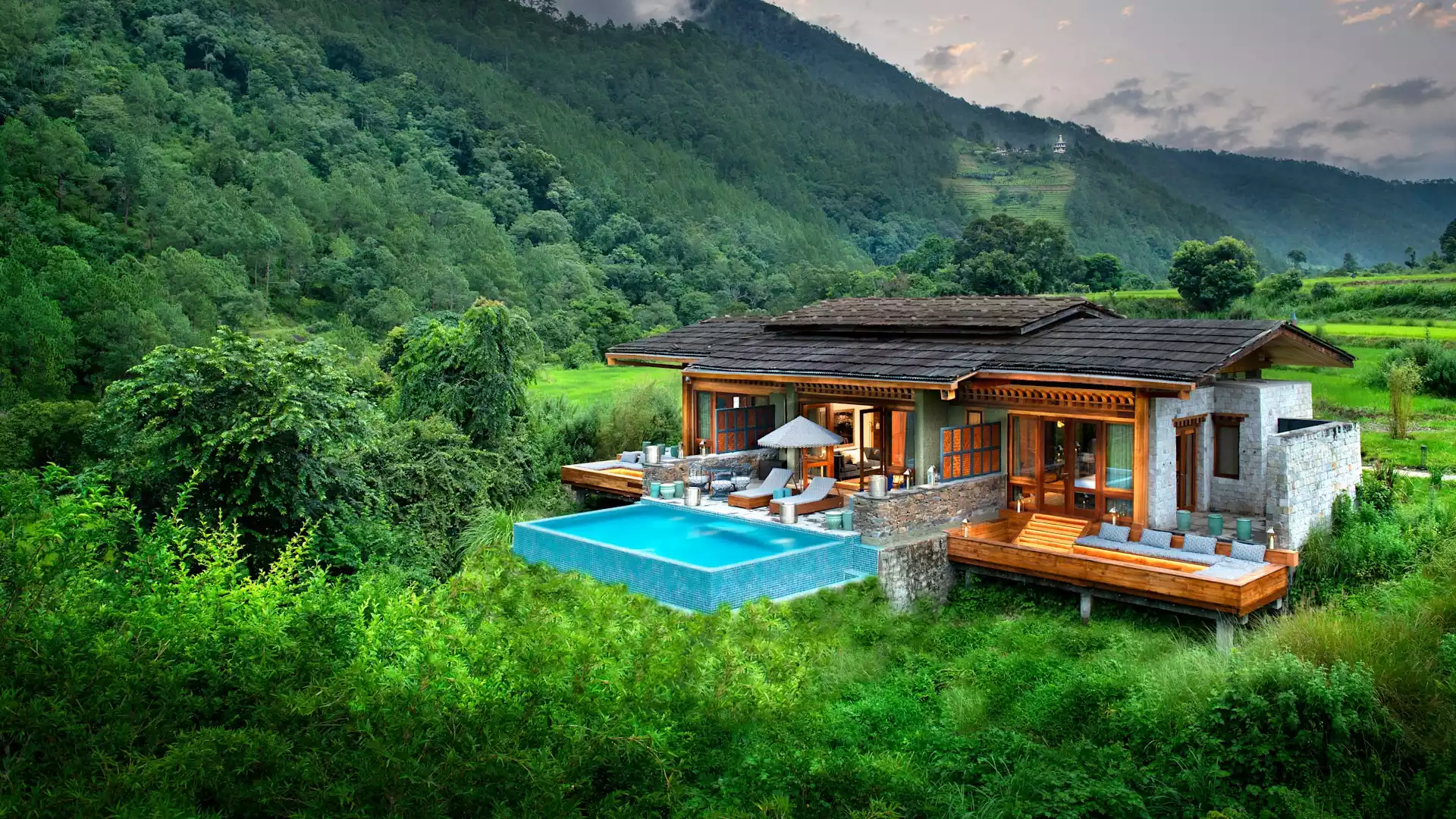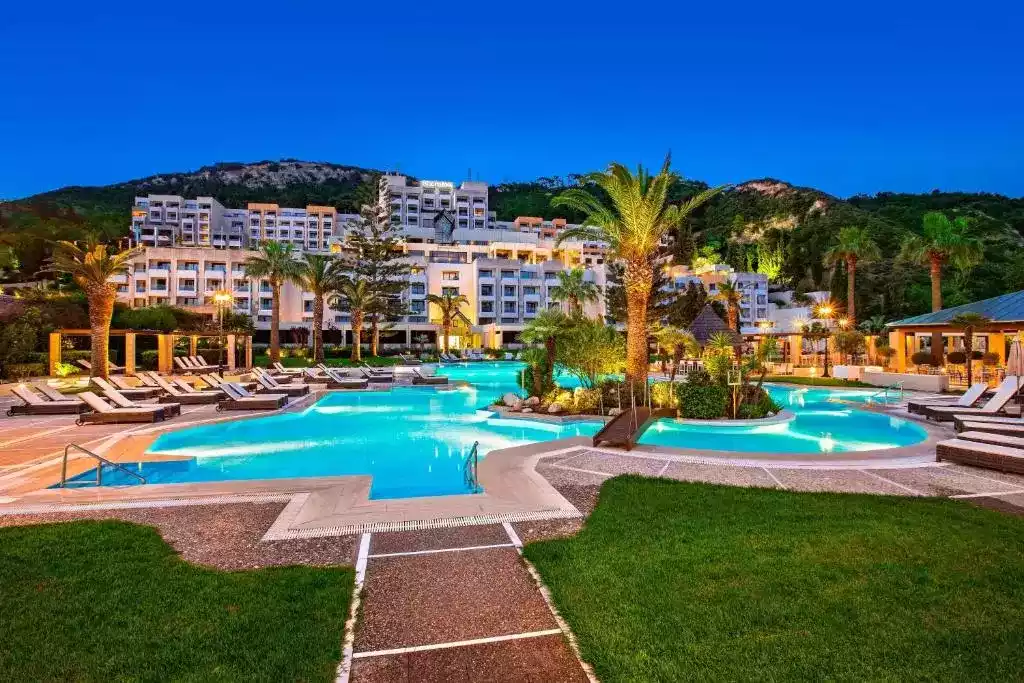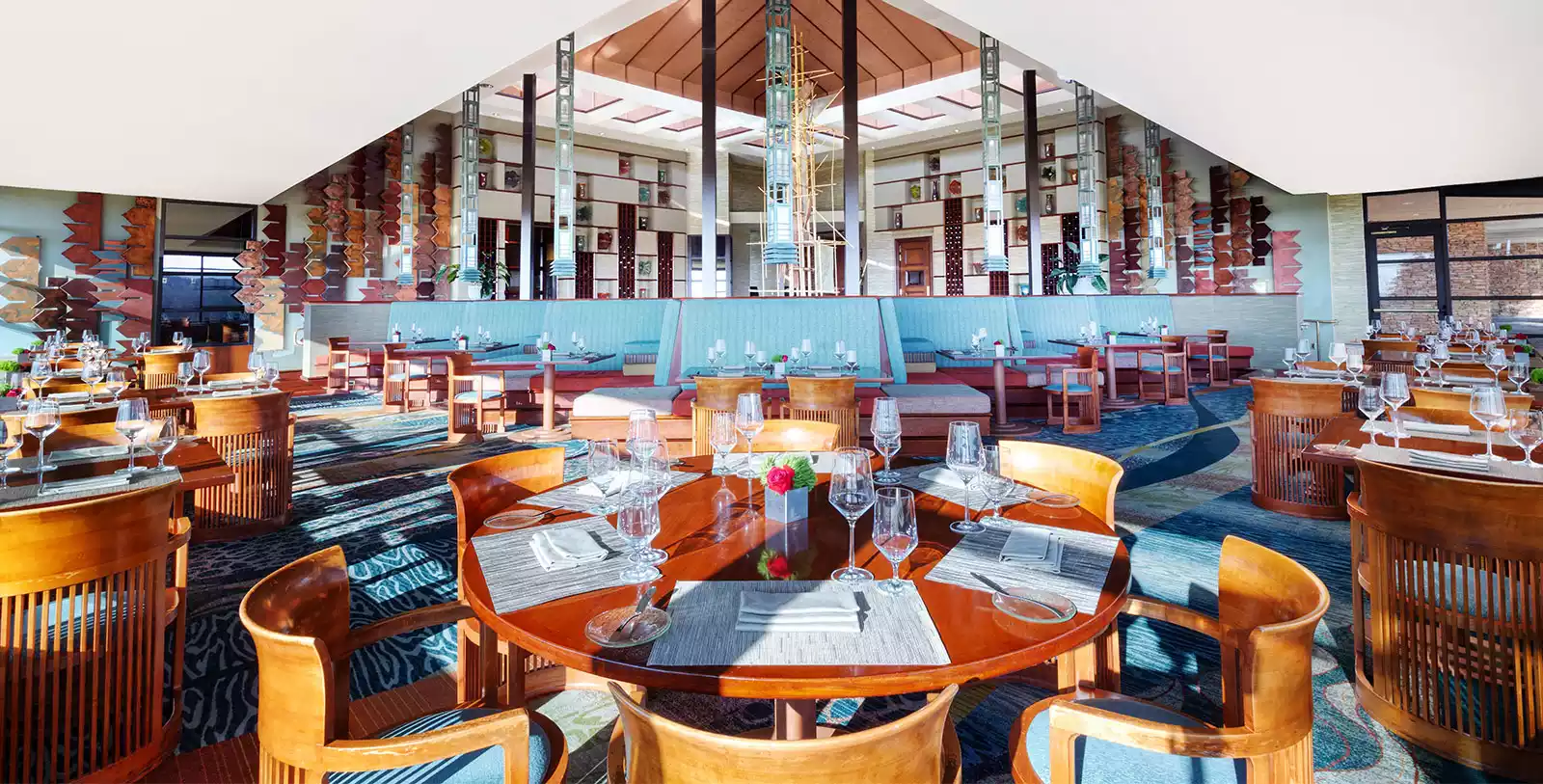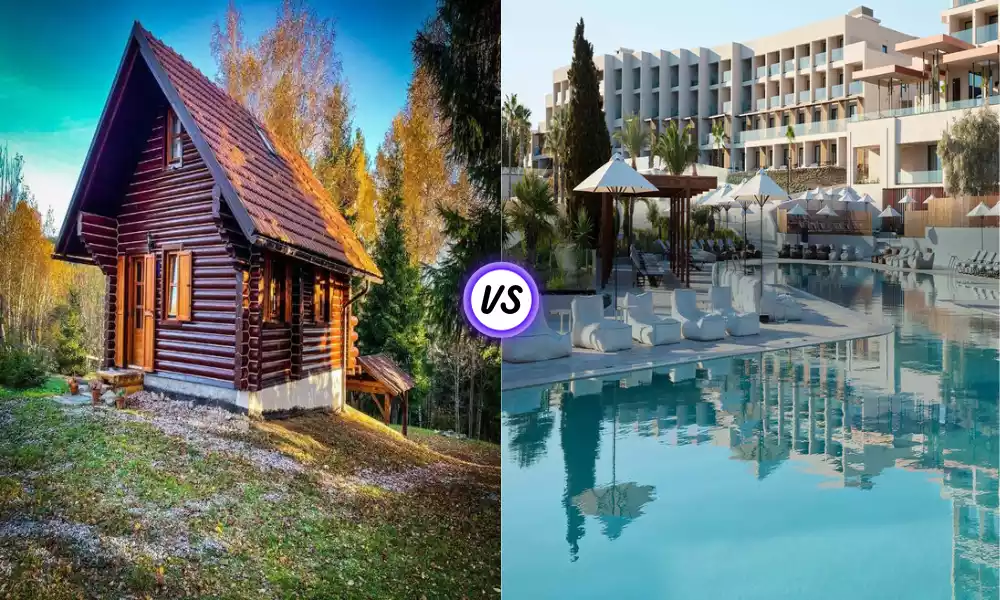Lodge and Resort is a luxurious and tranquil retreat nestled amidst picturesque natural surroundings. Designed to offer guests a serene escape from the hustle and bustle of everyday life, these establishments typically feature comfortable accommodations, world-class amenities, and a range of leisure activities. Whether nestled in the heart of a lush forest, perched by a pristine beach, or overlooking majestic mountains, lodges and resorts provide a perfect blend of relaxation, adventure, and indulgence for those seeking a memorable getaway.
Definition of Lodge
A lodge is a type of accommodation facility, typically located in natural or remote settings such as forests, mountains, wilderness areas, or near wildlife habitats. Lodges are known for their cozy and rustic charm and often consist of cabins, cottages, or chalets.

They provide lodging, dining, and often basic amenities to guests, with a particular emphasis on offering proximity to outdoor and nature-based activities such as hiking, fishing, wildlife viewing, and other outdoor adventures. Lodges are popular choices for travelers seeking a peaceful and immersive experience in natural surroundings.
Definition of Resort
A resort is a hospitality establishment or commercial property that offers a wide range of amenities, accommodations, and recreational facilities to guests. Resorts are typically situated in diverse settings, including coastal areas, urban centers, rural landscapes, or other attractive destinations.

They provide a comprehensive guest experience, often featuring elements like hotels, suites, villas, restaurants, bars, pools, spas, fitness centers, golf courses, and various leisure activities. Resorts cater to a diverse clientele, including families, couples, and individuals seeking relaxation, entertainment, and a variety of recreational opportunities, making them popular choices for vacations and getaways.
Comparison Table of Lodge and Resort
Below is a comparison table highlighting the key differences between lodges and resorts:
| Aspect | Lodge | Resort |
|---|---|---|
| Location and Setting | Often in natural, remote, or wilderness areas | Found in diverse settings (coastal, urban, rural) |
| Size and Capacity | Smaller, with fewer rooms or cabins | Larger, accommodating more guests |
| Accommodation Types | Cabins, cottages, chalets | Hotels, suites, villas, diverse options |
| Amenities and Facilities | Limited amenities, often essentials | Extensive facilities (pools, spas, etc.) |
| Activities and Entertainment | Nature-based activities, relaxation-focused | Wide array of activities, entertainment |
| Target Audience | Nature enthusiasts, solitude seekers | Families, couples, diverse traveler types |
| Pricing and Budget | More budget-friendly or moderate pricing | Variable pricing, including luxury options |
| Environmental Impact | Often in ecologically sensitive areas | Varies, some prioritize sustainability |
There can be exceptions and variations within both lodges and resorts, so individual properties may offer different experiences. The choice between a lodge and a resort often depends on personal preferences and travel goals.
Location and Setting
Sure, here’s an expanded section on the Location and Setting for both lodges and resorts:
Lodge
- Natural and Remote Locations: Lodges are often situated in pristine and secluded natural environments. They are commonly found in places like national parks, forests, mountains, and wilderness areas.
- Emphasis on Proximity to Nature: The primary appeal of lodges is their connection to nature. They are intentionally built in areas where guests can immerse themselves in the beauty of the outdoors.
- Scenic Surroundings: Lodges usually offer picturesque views of natural landscapes, whether it’s a mountain range, a forest, a lake, or a river.
- Privacy and Tranquility: The remote locations of lodges provide guests with a sense of solitude and tranquility, making them ideal for those seeking peace and relaxation.
Resort
- Varied Settings: Resorts can be found in a wide range of settings, catering to different preferences. These settings can include urban, coastal, tropical, desert, or even remote areas.
- Diverse Environmental Focus: The setting of a resort varies significantly based on its type. Beach resorts focus on coastal areas, while ski resorts are in snowy mountain regions. Some are in bustling urban centers, while others are in tropical paradises.
- Manicured Landscapes: Resorts often have meticulously landscaped surroundings with lush gardens, manicured lawns, and artificial water features like pools or lagoons.
- Access to Various Environments: Depending on the type of resort, guests may have access to multiple environments, such as beaches, forests, or cultural attractions within the resort’s property.
The location and setting of lodges emphasize their connection to natural, remote, and often rugged environments, while resorts have a broader range of settings, including both natural and urban landscapes, and often offer manicured surroundings and access to various types of environments within their properties. The choice between a lodge and a resort may depend on the traveler’s preference for the type of setting they wish to experience during their stay.
Accommodation
Certainly, here’s an expanded section on Accommodation for both lodges and resorts:
Lodge
- Smaller, Cozy Accommodations: Lodges typically offer smaller, more intimate, and cozy accommodation options. These may include cabins, cottages, or rooms within the main lodge building.
- Limited Room Variety: Lodges often have a limited variety of room types, focusing on maintaining the rustic and natural feel of the environment. Guests can expect simple and comfortable accommodations.
- Shared Facilities: In some lodges, guests may share common facilities such as communal dining areas, bathrooms, and sitting rooms. This communal aspect can foster a sense of community among guests.
- Rustic Decor: Lodge accommodations are often decorated in a rustic or traditional style, using natural materials like wood and stone to enhance the connection with the natural surroundings.
Resort
- Diverse Accommodation Options: Resorts typically offer a wide range of accommodation options to cater to various preferences and budgets. These can include standard rooms, suites, villas, bungalows, and more.
- Luxury Options: Many resorts feature luxury accommodations, such as overwater bungalows in tropical destinations, private villas with pools, and spacious suites with high-end amenities.
- Private Facilities: Resorts generally provide private facilities for each accommodation unit, including en-suite bathrooms and private balconies or terraces.
- Customization: Some resorts offer the option to customize accommodations to meet guests’ specific needs and preferences, such as choosing the type of view or room decor.
Lodges typically offer smaller, cozier, and simpler accommodation options with an emphasis on rustic charm and often involve shared facilities to enhance the communal experience. Resorts, on the other hand, provide a wider range of accommodation choices, including luxury options, and prioritize private and personalized facilities for guests. The choice between a lodge and a resort may depend on the traveler’s desire for a more rustic and communal experience or a more diverse and personalized accommodation experience.
Facilities and Amenities
Certainly, here’s an expanded section on Facilities and Amenities for both lodges and resorts:
Lodge
- Limited On-Site Amenities: Lodges generally have a more modest set of on-site amenities compared to resorts.
- Nature-Centric Activities: The focus is on activities that connect guests with the natural surroundings. This may include guided hikes, wildlife viewing, birdwatching, and stargazing.
- Cozy Common Areas: Lodges often feature cozy common areas with fireplaces, libraries, or lounges, providing a warm and communal atmosphere for guests to relax and socialize.
- Basic Dining Facilities: Lodges usually have dining facilities that serve local and hearty cuisine, with an emphasis on using locally sourced ingredients.
Resort
- Abundant On-Site Amenities: Resorts are known for their extensive on-site amenities and services, catering to a wide range of guest preferences.
- Diverse Recreational Activities: Resorts offer a plethora of recreational options, including water sports (like kayaking, snorkeling, and scuba diving), golf courses, tennis courts, fitness centers, and spa facilities.
- Multiple Dining Options: Resorts typically have multiple restaurants and dining options, including fine dining, casual eateries, poolside bars, and room service. They often feature diverse international cuisines.
- Entertainment and Nightlife: Many resorts have entertainment programs, such as live music, cultural performances, and themed parties, providing guests with vibrant nightlife experiences.
Lodges offer limited on-site amenities with a strong focus on nature-related activities and communal spaces. Resorts, on the other hand, provide a wide array of amenities and services, including diverse recreational options, dining choices, and entertainment, creating a more dynamic and activity-packed experience for guests. The choice between a lodge and a resort may depend on whether a traveler seeks a simpler, nature-centric experience or a more comprehensive and activity-filled stay.
Activities and Entertainment
Here’s an expanded section on Activities and Entertainment for both lodges and resorts:
Lodge
- Nature-Centric Activities: Lodges primarily offer activities that revolve around the natural environment and wildlife. These may include:
- Guided nature walks and hikes
- Wildlife safaris and viewing
- Birdwatching tours
- Stargazing sessions
- Outdoor Adventure: Many lodges provide opportunities for outdoor adventures like:
- Fishing in nearby rivers or lakes
- Canoeing or kayaking
- Horseback riding
- Cross-country skiing or snowshoeing (in winter)
- Educational Programs: Some lodges host educational programs, where guests can learn about the local ecosystem, indigenous cultures, or conservation efforts.
Resort
- Diverse Recreational Activities: Resorts offer a wide range of recreational activities to cater to various guest interests, such as:
- Water sports: Snorkeling, scuba diving, jet-skiing, paddleboarding
- Golf: Many resorts have their golf courses
- Tennis, volleyball, and other sports
- Spa and wellness treatments
- Entertainment and Nightlife: Resorts often provide entertainment options, including:
- Live music performances
- Dance shows
- Themed parties and events
- Nightclubs and bars for nightlife enthusiasts
- Children’s Programs: Many resorts have kids’ clubs and activities to keep young guests entertained, allowing parents to enjoy some relaxation time.
- Cultural Experiences: Depending on the resort’s location, guests may have opportunities to engage in cultural experiences, such as traditional dance performances or cooking classes.
Lodges focus on nature-centered and outdoor activities, offering guests the chance to connect with the natural environment. Resorts, on the other hand, provide a diverse range of recreational activities, entertainment options, and amenities to create a dynamic and engaging vacation experience, suitable for a wider spectrum of interests and age groups. The choice between a lodge and a resort often depends on the traveler’s preferences for the types of activities and entertainment they seek during their stay.
Pricing and Budget
Here’s an expanded section on Pricing and Budget for both lodges and resorts:
Lodge
- Generally More Budget-Friendly: Lodges are typically more budget-friendly compared to resorts, making them an attractive option for cost-conscious travelers.
- Fewer Luxury Options: While some lodges offer luxurious accommodations, the overall emphasis is on providing comfortable and rustic lodging, which often comes at a lower price point.
- All-Inclusive Options: Some lodges may offer all-inclusive packages that bundle accommodation, meals, and certain activities, providing value for money.
- Varied Pricing: Pricing at lodges can vary significantly based on factors like location, season, and the level of amenities and services offered.
Resort
- Wide Range of Pricing Options: Resorts offer a broad spectrum of pricing options, catering to various budgets. This includes budget-friendly resorts as well as luxury and ultra-luxury options.
- Luxury and Premium Resorts: High-end resorts can be significantly more expensive, offering lavish amenities, gourmet dining, and exclusive services.
- Packages and Deals: Resorts often provide package deals and promotions, including family packages, honeymoon packages, and seasonal discounts.
- Additional Costs: Guests should be aware of potential extra costs at resorts, such as fees for activities, spa treatments, fine dining, and premium services.
Lodges are generally more budget-friendly and can be a cost-effective choice for travelers looking for a simpler and more rustic experience. Resorts, on the other hand, offer a wide range of pricing options, from budget to luxury, allowing guests to tailor their experience to their specific budgetary constraints and preferences. The choice between a lodge and a resort often comes down to individual budget considerations and the level of luxury and amenities desired during the stay.
Dining Options
Here’s an expanded section on Dining Options for both lodges and resorts:
Lodge
- Limited Dining Facilities: Lodges typically offer limited dining options, focusing on providing essential meals in a cozy and communal setting.
- Local and Seasonal Cuisine: Lodge dining often emphasizes locally sourced and seasonal ingredients, allowing guests to experience the flavors of the region.
- Communal Dining Experience: Many lodges encourage communal dining, where guests dine together at shared tables, fostering a sense of community.
- Rustic Dining Atmosphere: The dining areas in lodges are often rustic and cozy, featuring elements like wooden furniture, fireplaces, and views of the natural surroundings.

Resort
- Diverse Dining Venues: Resorts typically offer a variety of dining venues, ranging from casual eateries and cafes to upscale restaurants with diverse culinary offerings.
- International Cuisine: Guests at resorts can enjoy a wide range of international cuisines, including Italian, Asian, Mediterranean, and more.
- Fine Dining Options: Many resorts have fine dining restaurants, providing a gourmet experience with an extensive wine list and impeccable service.
- Room Service: Resorts often offer room service, allowing guests to enjoy meals in the comfort of their accommodation.
- Special Dietary Requests: Resorts are usually more accommodating to special dietary requests and can cater to vegetarian, vegan, gluten-free, or other dietary preferences.
Lodges offer a more limited dining experience with an emphasis on local and communal dining, creating a homey and authentic atmosphere. Resorts, on the other hand, provide a diverse range of dining options, including international cuisine and fine dining, catering to various tastes and preferences. The choice between a lodge and a resort may depend on whether guests prefer a simpler, locally focused dining experience or a wider variety of culinary choices and dining atmospheres.
Environmental Impact
Here’s an expanded section on Environmental Impact for both lodges and resorts:
Lodge
- Lower Environmental Footprint: Lodges often have a lower environmental impact compared to larger resorts. This is because they are typically smaller in scale and located in natural, less developed areas.
- Eco-Friendly Practices: Many lodges prioritize eco-friendly practices, such as:
- Energy conservation through the use of renewable energy sources or energy-efficient systems.
- Water conservation measures, including low-flow fixtures and rainwater harvesting.
- Waste reduction and recycling programs.
- Sustainable construction and architecture that minimizes disruption to the natural environment.
- Education and Conservation: Some lodges are actively involved in environmental education and conservation efforts, working to protect the local ecosystems and wildlife.
Resort
- Varied Environmental Impact: Resorts can have a varied environmental impact, ranging from relatively eco-friendly to more resource-intensive, depending on factors such as size, location, and practices.
- Large-Scale Operations: Larger resorts with extensive amenities and facilities may consume more energy and resources, impacting the local environment.
- Sustainability Initiatives: Many modern resorts are increasingly adopting sustainability initiatives, such as:
- Eco-friendly building designs with LEED certification.
- Water and energy conservation programs.
- Waste reduction and recycling efforts.
- Support for local conservation projects.
- Certifications and Awards: Some resorts aim for certifications like Green Globe or EarthCheck to demonstrate their commitment to sustainable practices.
Lodges tend to have a lower environmental footprint due to their smaller size and remote locations. They often prioritize eco-friendly practices and may actively engage in environmental conservation efforts. Resorts, especially larger ones, can have a more significant environmental impact, but many are making efforts to adopt sustainable practices and reduce their ecological footprint. Travelers concerned about environmental impact may want to research and choose lodges or resorts that align with their sustainability values and practices.
Which is more popular between Lodge or Resort?
The popularity of lodges versus resorts can vary significantly depending on the region, the specific location, and the preferences of travelers. There is no definitive answer as to which is universally more popular, as it largely depends on the type of experience and setting that a traveler is seeking. Here are some general considerations:
- Lodge Popularity:
- Lodges are often more popular in remote and natural destinations, such as national parks, wildlife reserves, and mountainous regions.
- They are favored by travelers seeking a closer connection to nature, tranquility, and a rustic atmosphere.
- Lodges can be especially popular among eco-conscious travelers who value sustainability and minimal environmental impact.
- Resort Popularity:
- Resorts are popular in a wide range of settings, including coastal areas, tropical destinations, urban centers, and cultural hubs.
- They appeal to travelers looking for a diverse array of amenities, activities, and dining options in addition to their accommodations.
- Resorts are often chosen for family vacations, honeymoons, and destination weddings due to their versatile offerings.
The popularity of lodges and resorts can also change over time due to trends in travel preferences, economic factors, and global events. Ultimately, the popularity of each type of accommodation is subjective and depends on individual traveler preferences and the specific travel goals for a given trip.
Conclusion
Lodges and Resorts offer distinct experiences catering to different traveler preferences. Lodges, often nestled in natural and remote settings, provide intimate, nature-centric, and budget-friendly stays, emphasizing communal experiences and eco-conscious practices. In contrast, resorts, with diverse amenities and pricing options, offer a broader range of recreational activities, dining choices, and entertainment, accommodating a wider spectrum of interests and budgets.
The choice between a lodge and a resort depends on individual priorities, whether seeking a serene, rustic escape or a dynamic, all-encompassing vacation. Both lodging options contribute uniquely to the travel industry, appealing to various adventurers and holidaymakers.

